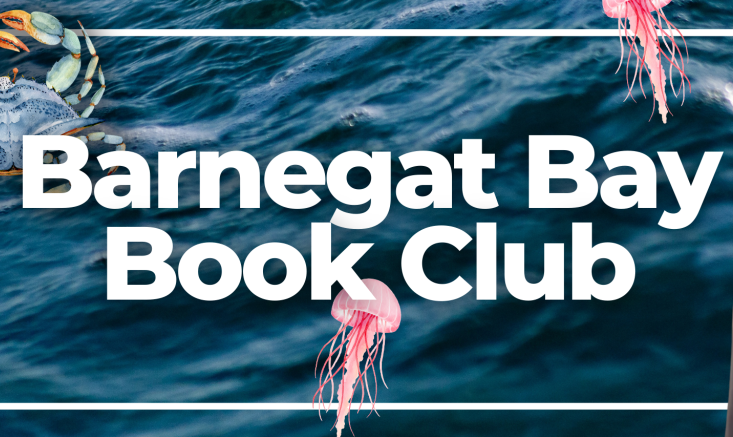On June 29, Rutgers marine biologist Mike Kennish delivered a talk to over fifty attendees at Save Barnegat Bay’s Annual Meeting. Nitrogen and other polutants are having an alarming impact on the bay’s ecology.
“Bathtub” bay’s plants in danger
NITROGEN LEVEL FEEDS GROWTH OF THREATS TO ECOSYSTEM
Posted by the Asbury Park Press on 07/1/06
BY KIRK MOORE
TOMS RIVER BUREAU
LAVALLETTE — If Barnegat Bay had a central control panel, all the warning lights would be flashing red.
Shrinking beds of native underwater eelgrass, floating mats of sea lettuce, and a resurgence of stinging sea nettle jellyfish are the most obvious signals of a trend scientists now worry is accelerating, said Michael J. Kennish, a Rutgers University professor and leader among Barnegat Bay researchers.
“We have too much nitrogen in the bay,” Kennish told members of the environmental group Save Barnegat Bay at their annual meeting here Thursday night. Flushed into the bay from chemically treated lawns, pet waste and other sources, nitrogen fertilizes plant life in the bay just as well as it does on front lawns.
“The plants do the same thing in the water: They grow thicker, they grow uncontrollably. But it shifts the community of organisms in these systems,” Kennish said.
In the professor’s collection of underwater photographs, the one species not benefiting from this uncontrolled dosing is arguably the most important one in the bay. Kennish finds eelgrass choking under mats of nitrogen-fed algae, the wavy grass fronds crusted with barnacle-like growths.
Not good, Kennish said. “This should look like the grass on your lawn.”
And when the eelgrass dies, smothered by algae and digested by bacteria, the resulting oxygen depletion drives off crabs and fish and kills other animals in the bottom sediment.
“The net result is you wind up with a smaller population of things in the bay,” Kennish said. “We’re losing our diversity in the bay. But people aren’t tuned into it.”
Scientists call the process eutrophication, and the U.S. Environmental Protection Agency has identified Barnegat Bay as “highly eutrophic” — meaning it’s one of the most seriously affected estuaries on the East Coast now, Kennish said.
“You should be looking at the plants first, not the fish,” Kennish stressed.
It’s there at the base of the food web that the bay’s problems take form. By the time they play out with something people really care about — say, the bay’s once-multimillion-dollar clam fishery — it’s too late, he said.
From 1975 to 2000, eelgrass beds in Little Egg Harbor at the bay’s south end shrank by 60 percent, according to one estimate. Then, from around 1985 to the turn of the century, the once-prolific Little Egg clam beds’ shellfish declined by two-thirds, according to a state Department of Environmental Protection study.
“I think it goes back to this nitrogen thing,” Kennish said. Clams like to eat microscopic plankton called diatoms, but the heavy-nutrient load going into the bay favors other kinds of algae, he said.
Now, “there’s no longer a viable commercial fishery, which at one time was phenomenal.”
Geography is one part of the problem. The adjoining western land area that drains to the bay, called the watershed, is about 6.5 times as big in area as the bay itself, Kennish said. To the east, the Barnegat peninsula and Long Beach Island are long dikes separating the bay from the ocean except for a couple of inlets.
“It’s like a bathtub. You dump stuff in there, it stays there,” Kennish said. It takes an estimated 70 days for the 42-mile-long bay to fully flush out from tides and winds, he said.
“You don’t have a problem in Delaware Bay like you have in Barnegat Bay because it’s open and there’s lots of flushing,” even with the huge load of runoff pollution that comes down the Delaware River, Kennish said.
The other comparison lies in Barnegat Bay’s neighbor to the south. Great Bay is out of the mouth of the Mullica River, which drains the central Pine Barrens. There’s almost no land development and new construction to speak of in that watershed, owing to strict state Pinelands regulations of the past 25 years, Kennish noted.
“The Mullica River is in great shape because you can’t build there,” he said. “Just follow the people and you’ll see the footprints of the problems they make.”
Good solutions are being offered, Kennish said, like public purchase of land for open space, new storm water controls and the state’s “smart growth” incentives for better land use planning.
But the bay’s future really depends on the decisions that local communities and political leaders make, and Kennish said the track record is not promising.
“You can’t tell people to stop living their lives. But you can’t let things develop the way they did. It just got out of control,” he said. “You’re better off with a smaller community.”
“The problem is, it’s a one-way street,” said Kent Mountford, formerly the EPA’s chief scientist for Chesapeake Bay and an early researcher of Barnegat Bay’s aquatic community. “Every time you get one more development, one more Wal-Mart, that’s it. That land is gone forever and you’ll never get it back.”
Kirk Moore: (732) 557-5728 or [email protected]
* * * * * * * * * * *



